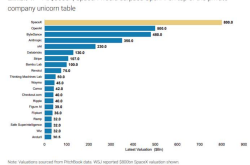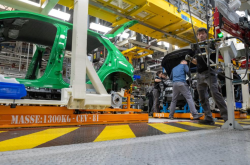Lei Jun Stands Tall Again: Xiaomi's Fortune Global 500 Ranking Soars 100 Positions
![]() 08/04 2025
08/04 2025
![]() 579
579
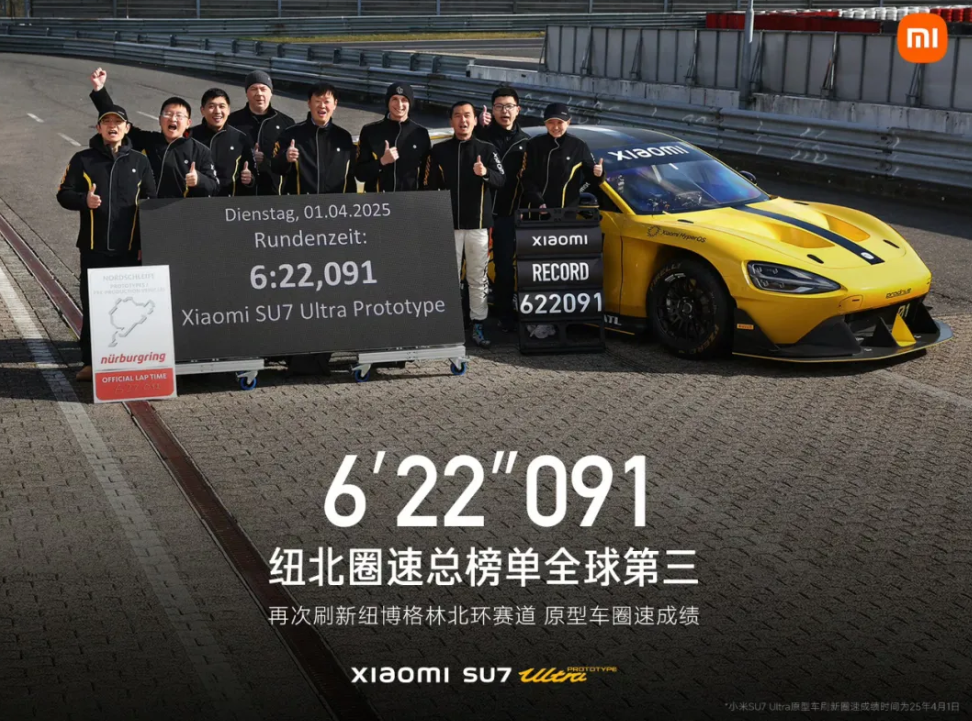
Written by / Xiaolin
Art designed by / Yang Lingxiao
Produced by / New Electric Species
Core Guide
On July 29, 2025, the Fortune Global 500 list was sensationally released, with Xiaomi Group making an impressive debut at No. 297.
Even more astonishing is Xiaomi's remarkable leap of 100 positions, vaulting from last year's 397th to 297th, marking the largest surge since its debut on the list in 2019.
* The above is the core content. If you do not wish to read the detailed interpretation, feel free to leave a comment.
This quantum leap not only set a new record for Xiaomi but also stirred up considerable excitement in the global tech industry.
Lei Jun, unable to contain his excitement, took to Weibo to express his gratitude: "Thank you to every user for your support. This is one of the most significant milestones for Xiaomi in 15 years."
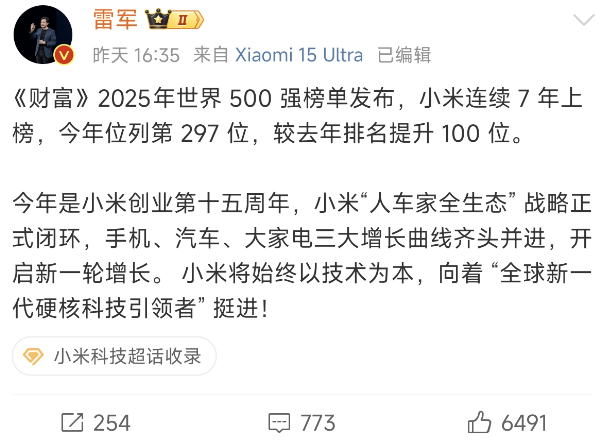
However, few are aware that behind Xiaomi's 100-position surge lies a meticulously planned strategy that Lei Jun has been cultivating for years.
01 Lei Jun's Ecological Vision
Lei Jun once declared, "I aim to turn Xiaomi into a true ecological company within ten years." At the time, many dismissed it as a mere aspiration, given Xiaomi's primary focus on hardware, particularly smartphones.
But in 2024, Lei Jun's ecological dream materialized. Xiaomi officially unveiled its "closed-loop strategy of people, cars, and homes," which fueled its meteoric rise of 100 positions on the Fortune Global 500 list.
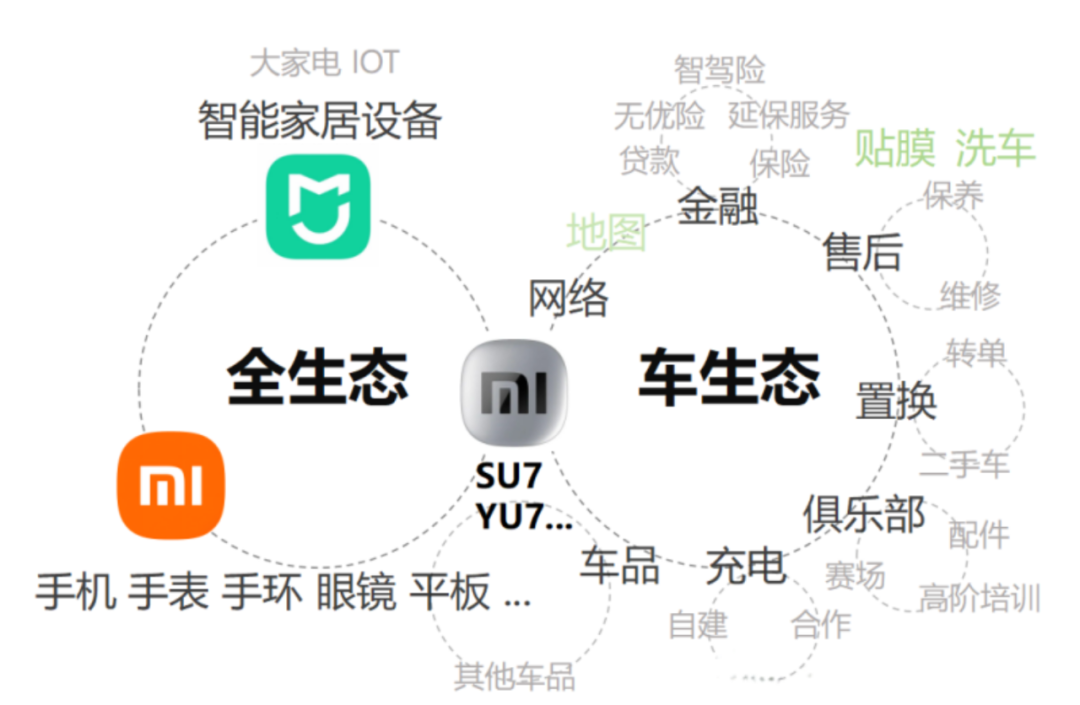
The power of this ecosystem is nothing short of astonishing. Xiaomi's total revenue in 2024 soared to 365.9 billion yuan, marking a year-on-year increase of 35% and setting a new record. Crucially, this revenue is now derived from a synergy of three major sectors: smartphones, automobiles, and major household appliances.
This diversified revenue structure aligns perfectly with the Fortune Global 500's emphasis on a company's anti-risk capabilities and sustainable development potential.
The success of Lei Jun's ecological dream hinges on his profound understanding of "connectivity." Unlike traditional enterprises that merely stack products, Xiaomi seamlessly integrates seemingly independent hardware products through software platforms like MIUI, Mijia APP, and Xiaoai Classmate. Users who purchase Xiaomi smartphones are naturally inclined to choose Xiaomi automobiles and household appliances, fostering a strong ecological bond.
This ecological synergy maximizes Xiaomi's user value and qualitatively enhances its profitability.
02 Xiaomi's Three Main Pillars
If the ecosystem is Lei Jun's strategic framework, then smartphones, automobiles, and major household appliances are the three pillars supporting Xiaomi's 100-position leap on the Fortune Global 500 list.
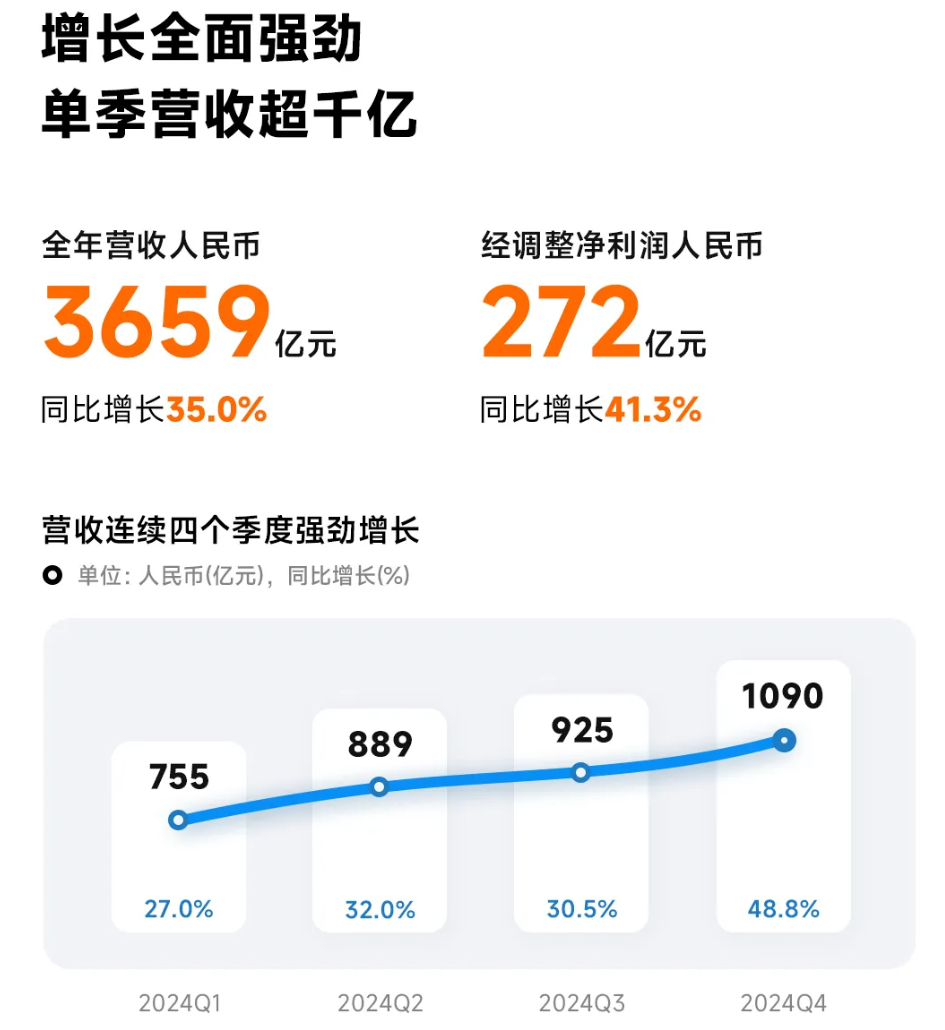
Smartphone Business: The Return of a King
In 2024, Xiaomi's smartphone business revenue reached 191.8 billion yuan, with global shipments totaling 169 million units, marking a year-on-year increase of 15.7%. This figure signifies that Xiaomi was the primary growth driver in the global smartphone market.
Even more noteworthy is Xiaomi's resurgence in the Chinese market. In the first and second quarters of 2025, Xiaomi smartphones ranked first in China in terms of activation volume for two consecutive quarters, marking Xiaomi's first return to domestic prominence in many years.
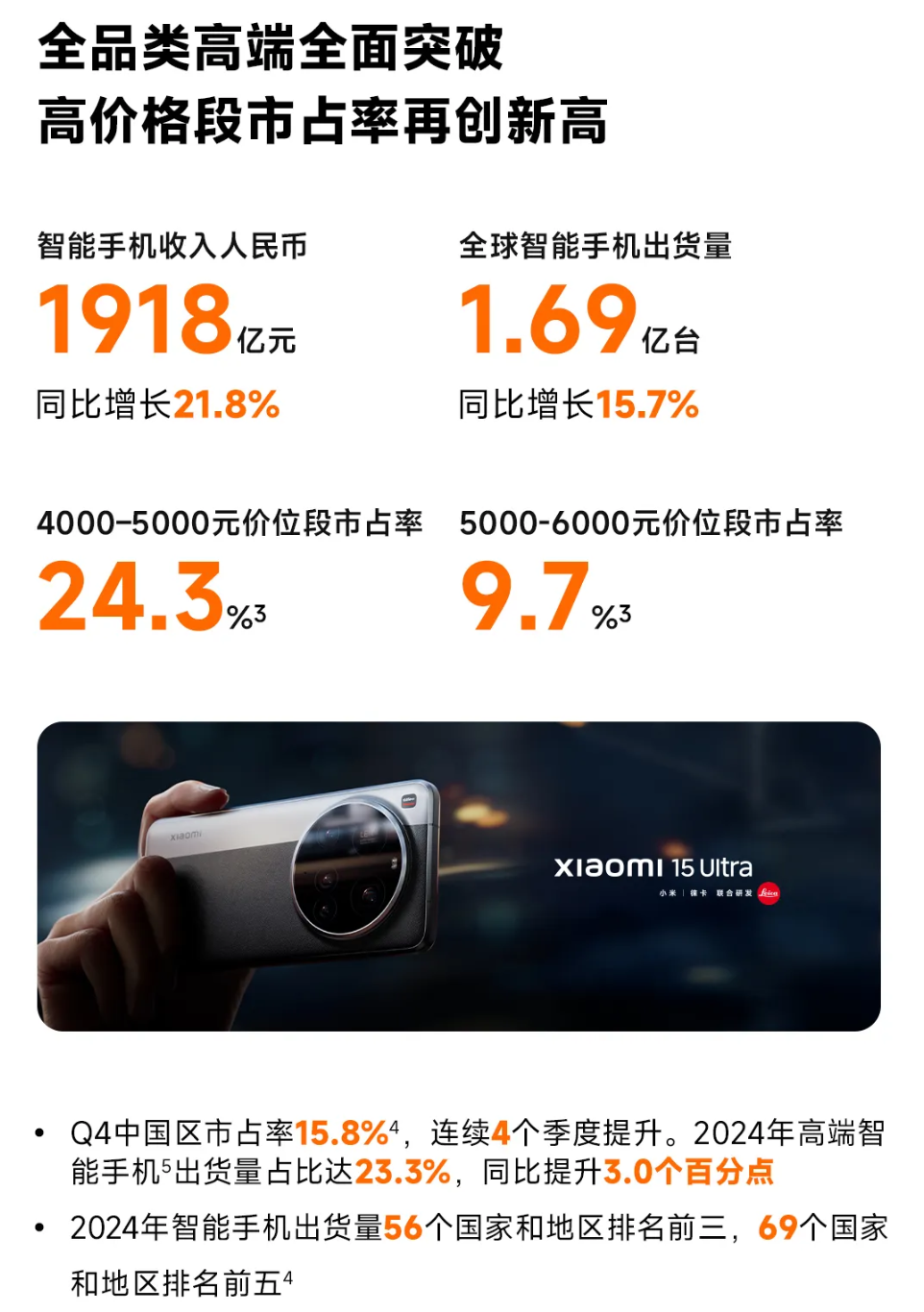
Automobile Business: The Dark Horse of the New Forces
While smartphones serve as Xiaomi's foundation, automobiles are its surprise element.
In just nine months after its launch, Xiaomi's SU7 delivered 136,854 vehicles, setting a delivery record among new-force automakers. Even more impressive, Xiaomi's total automobile deliveries surpassed 300,000 in July 2025, achieving this feat in just 15 months and setting a new benchmark for delivery speed in the industry.
With revenue of 32.8 billion yuan, the automobile business accounts for a modest portion of Xiaomi's total revenue but carries significant symbolic weight. It proves Xiaomi's ability to rise swiftly in a new race, and this cross-border capability is precisely the core competitiveness of Fortune Global 500 companies.
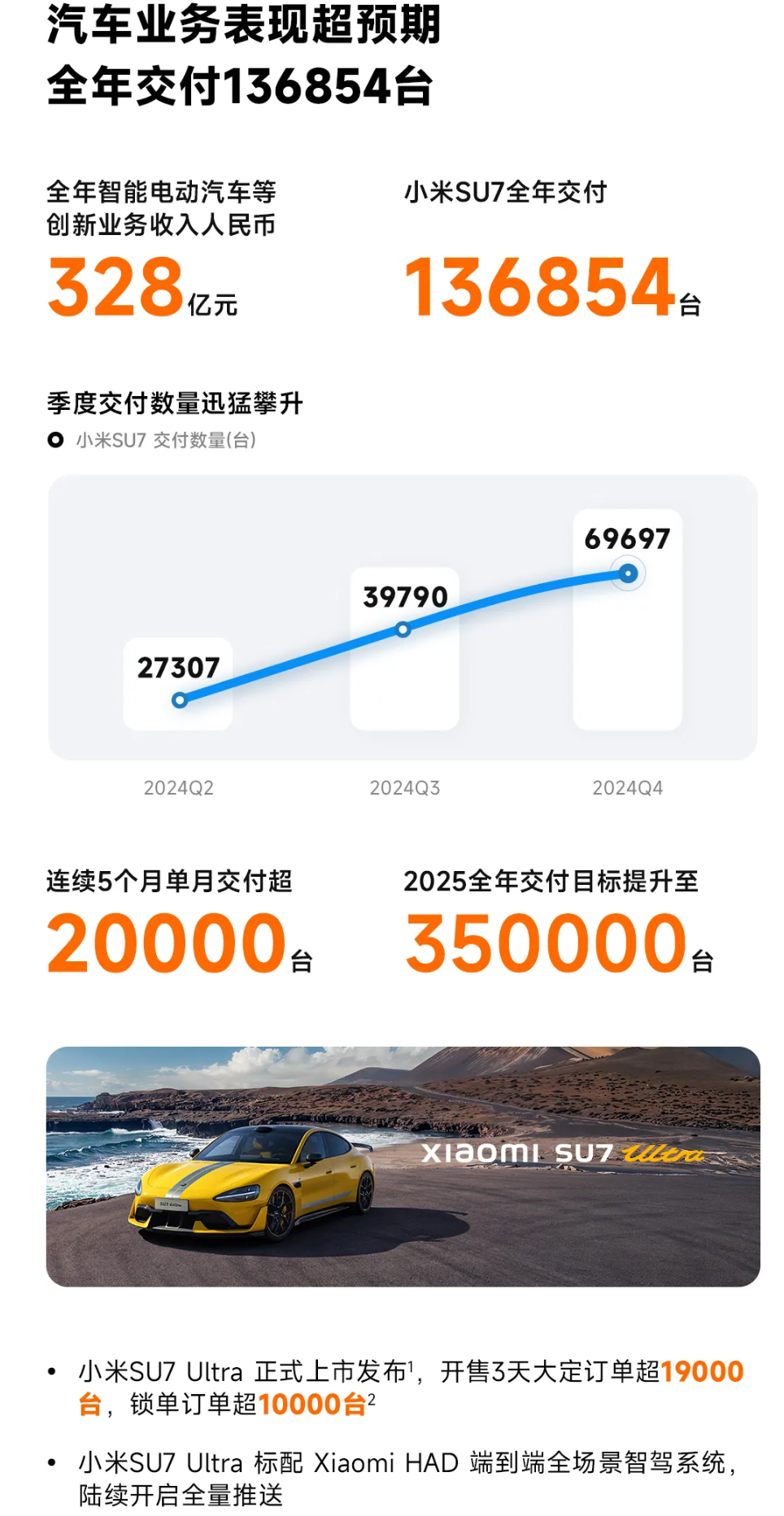
Major Household Appliances Business: The Overlooked Growth Engine
The sector most overlooked by the outside world is precisely Xiaomi's most stable growth driver – major household appliances.
Revenue from IoT and consumer products amounted to 104.1 billion yuan, marking a year-on-year increase of 30%. Shipments of air conditioners, refrigerators, and washing machines all hit record highs, reflecting Xiaomi's deep penetration into the traditional home appliance field.
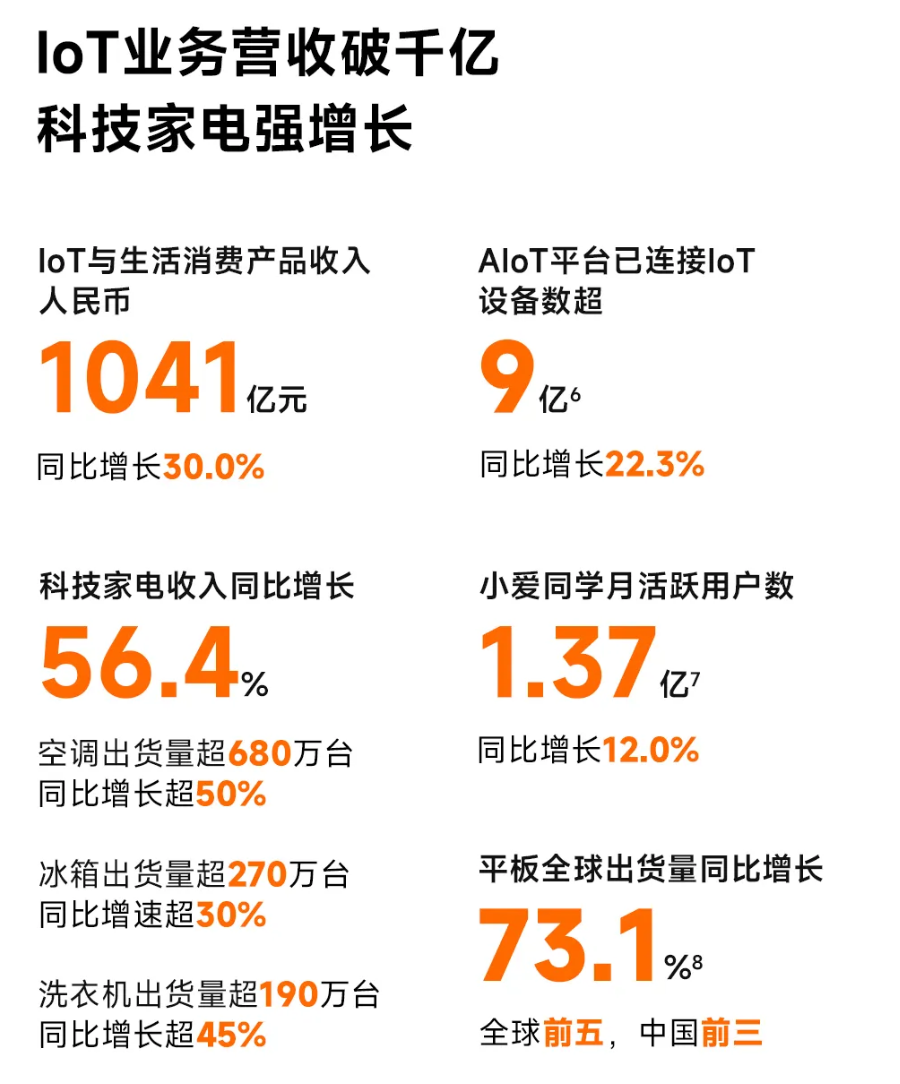
The synergy of these three pillars forms Xiaomi's real killer move.
Users who purchase Xiaomi smartphones are more likely to trust Xiaomi automobiles, and those who drive Xiaomi automobiles are more inclined to choose Xiaomi household appliances. This cross-category transfer of brand trust significantly reduces Xiaomi's customer acquisition costs and maximizes the lifetime value of each user.
03 The Dawn of Xiaomi's 100 Billion R&D Investment
Many people focus solely on Xiaomi's 100-position leap on the Fortune Global 500 list but overlook the fundamental reason behind it: a qualitative shift in technological prowess.
Over the past five years, Xiaomi's cumulative R&D investment has surpassed 102 billion yuan, ranking among the top in Chinese technology enterprises and even outpacing the R&D investments of many traditional giants. More importantly, these investments are now reaping their rewards.
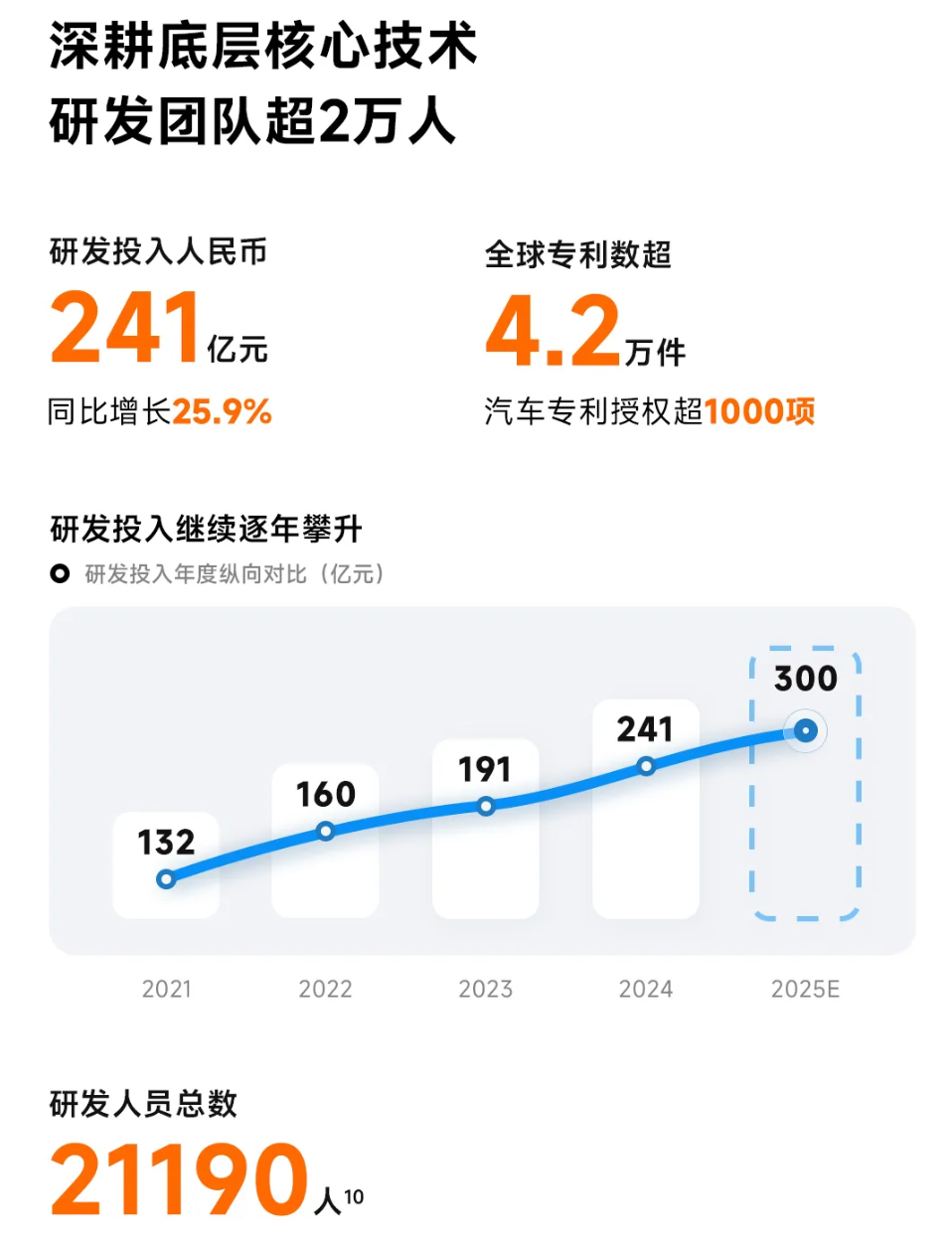
In May 2025, Xiaomi unveiled its self-developed flagship SoC, "Pengpai O1," becoming the first company in mainland China and the fourth globally to independently develop a 3nm flagship chip. This breakthrough shattered the technological monopoly of high-end chips and gave Xiaomi a genuine voice in core technologies.
Even more remarkable is Xiaomi's automotive technology breakthrough.
The Xiaomi SU7 Ultra production car set a new record as the fastest mass-produced electric vehicle at the Nürburgring, with a time of 7 minutes, 4 seconds, and 957 milliseconds. The SU7 Ultra prototype car even ranked third on the official lap time list of the Nürburgring, clocking in at 6 minutes, 22 seconds, and 91 milliseconds.
These achievements are not only a testament to Xiaomi's technological strength but also the best proof of its brand value.
Lei Jun's R&D logic differs from others.
While most companies engage in follow-up innovation, Xiaomi pursues disruptive innovation. From the Pengpai chip to automotive "three-electric" technology, Xiaomi tackles the most challenging problems head-on.
Although this R&D strategy entails significant risks, once a breakthrough is achieved, it can yield a substantial competitive advantage. Xiaomi's 100-position leap on the Fortune Global 500 list stands as the best evidence of the success of this R&D strategy.
Summary: What Other Big Moves Does Lei Jun Have Up His Sleeve?
Xiaomi's 100-position leap on the Fortune Global 500 list is merely the beginning, and Lei Jun has more exciting strategies up his sleeve.
The first card: The full-scale eruption of the AI ecosystem.
Lei Jun has revealed that Xiaomi is building full-stack AI capabilities, encompassing chips, algorithms, hardware, and software. Once this AI ecosystem matures, Xiaomi's product experience will undergo a revolutionary upgrade.
The second card: Deep exploration of overseas markets.
Currently, Xiaomi's overseas revenue accounts for about 40%, but there is still immense growth potential in many developed markets. With the international expansion of high-end products like Xiaomi automobiles, Xiaomi's globalization journey will enter a new phase.
The third card: Vertical integration of the industrial chain.
Lei Jun is steering Xiaomi's transformation from an asset-light model to an asset-heavy model, enhancing its control over the industrial chain through self-built factories and acquisitions of suppliers. This will significantly boost Xiaomi's profitability and anti-risk capabilities.
In 2025, Lei Jun set a growth target of over 30% for Xiaomi. At this rate, Xiaomi is poised to continue its ascent on next year's Fortune Global 500 list.
Xiaomi's 100-position leap on the Fortune Global 500 list is not just a victory for one enterprise but also a testament to China's technological innovation capabilities.
In the current era of global economic uncertainty, Xiaomi has demonstrated through its actions that Chinese enterprises can carve out a place on the world stage by daring to innovate and break new ground.
Lei Jun and his Xiaomi are penning a legendary chapter in the annals of Chinese technology enterprises.

